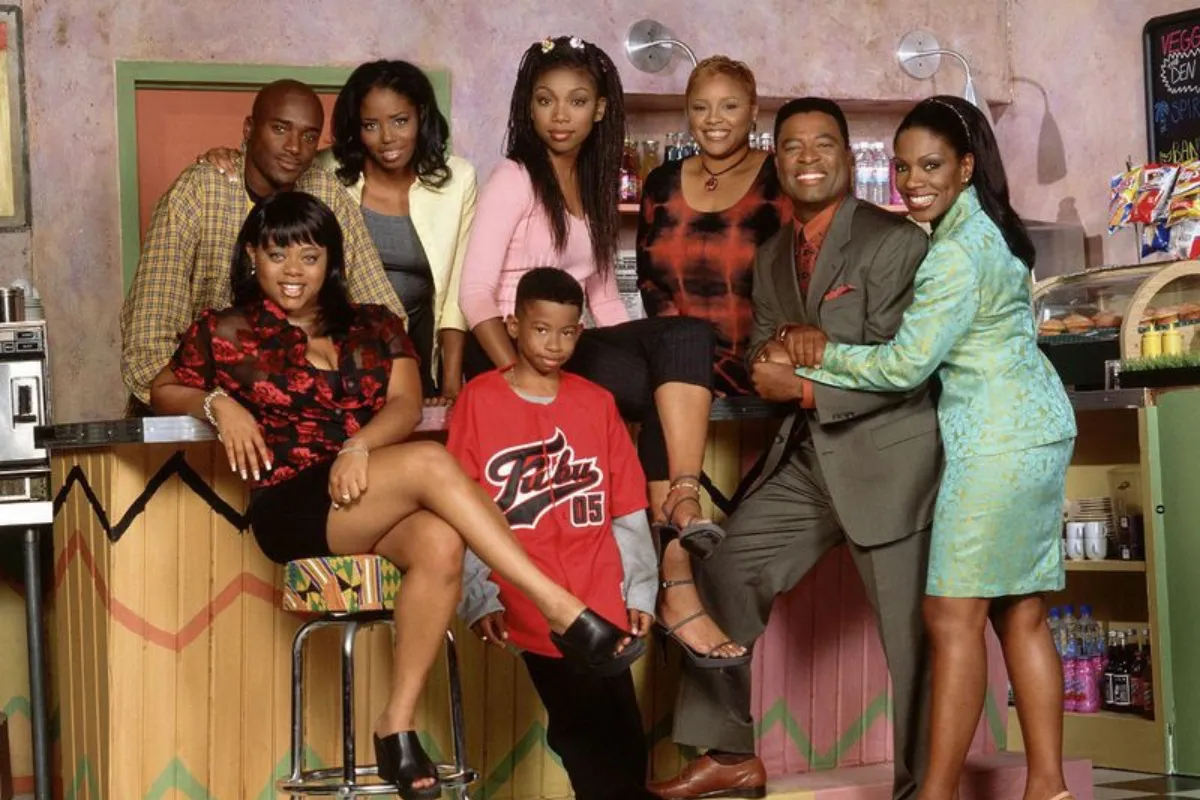I am old enough to remember the birth of The CW and, with it, the death of both The WB and UPN (United Paramount Network). All the shows that I grew up with providing representation were slowly canceled or ended ungraciously.
Recently, The Hollywood Reporter spoke to many who were a part of the moment when Leslie Moonves, the now-disgraced but then-chairman of CBS, and Barry Meyer of Warner Bros. Entertainment held a joint news conference to announced their companies would would merge to form a new channel called The CW. It was something people never saw coming.
Before this moment in 2006, UPN had become known for its Black sitcoms: Moesha, The Parkers, Half & Half, One on One and Girlfriends. Tom Nunan joined UPN as executive VP of programming in 1997. Back in the ’80s, Nunan had been behind greenlighting shows by Black writers, leading to the creation of iconic series like In Living Color, Martin, and Living Single. This, of course, was different from other Black sitcoms at the time, which hard largely white showrunners and white writers’ rooms.
“By the time I got to UPN, Fox had started to pivot away from shows like Martin and Living Single, so suddenly there was an opening again,” he told THR. “When I arrived, Moesha was already on the air, so I built on that […] [It wasn’t] just an effort to embrace an audience that hasn’t been embraced by the other channels; [it was] to encourage that audience to lead us with inspiration and ideas and in directions that none of us could predict.”
Rachel True, who starred as Mona on the show Half & Half, expressed how rewarding it was to be working with a Black female producer. “[Bowser said,] ‘This is just a show about people, and I’m not going to make you be any more or less Black than you already are,’” recalls True. “That there was room for that on network television by that point … We hadn’t seen that many Black alternatives on TV.”
These opportunities also led to Black talent getting started, like Mara Brock Akil, who started on Moesha and went on to create Girlfriends and its spinoff, The Game. “I was examining something that I sold in the room, which was that I was going to tell all the secrets of Black women, but my real secret was that we were human. And we had all these layers to us that deserve stories and deserve a place to be told,” Akil said.
Girlfriends and The Game were two of the only shows to fully survive that transition. Shows like Charmed and Gilmore Girls were kept on longer to ensure viewers continued. As a result, The CW would end up taking up more of a WB feel than being a true blending of the two networks—something Nunan says was a missed opportunity.
“I thought it was a huge missed opportunity and a big shame for The WB to just let that programming block fade away, because we’ve learned over and over again that the African American audience can be a tremendously loyal audience, and it just seemed like this audience helped us build our channel, and now we’re just going to step away from them?” he said.
Former UPN senior VP Kim Fleary, who stayed on at The CW post-merger, cites the trend of YA as the reason why the shows ended up getting whiter. That was how YA novels were at the time, and that’s how you end up with The Vampire Diaries race-bending a character only to make them essentially a magical negro.
Sadly, this entire profile is a great reminder that any progress, even when successful, can be undone when capitalism and trends move away from it. Despite these shows being profitable, their Blackness made advertisers less interested in spending top money on them. This is why representation can feel so uncertain—we know how quickly it can go away.
We are lucky that these shows left an impact, that they were not forgotten—but we also lost opportunities for young writers of color to get their start on projects, and in writers’ rooms filled with other BIPOC folks. It is something we can never get back, but it does make me, as a young writer, thankful that I was around for a lot of it.
And that we do have creators attempting to make sure it never happens again.
(via THR image: UPN)










Published: Feb 23, 2022 04:48 pm